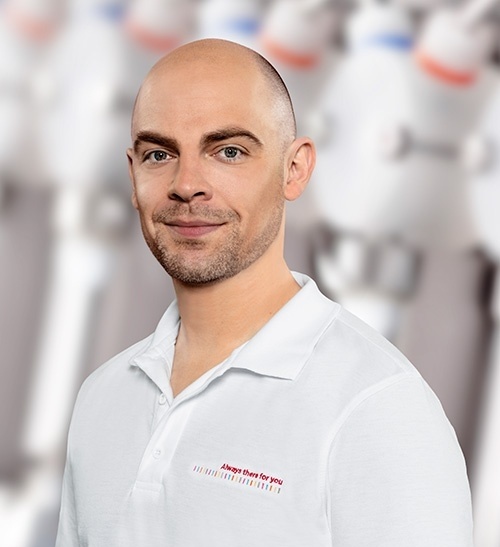Tecan uses cookies to improve our website. By continuing to browse our website, you accept our cookie policy.
Tecan uses cookies to improve our website. By continuing to browse our website, you accept our cookie policy.

By Manuel Bauer
Robert Tanguary runs a zebrafish facility and use zebrafish as a high throughput in vivo model system to identify bioactive molecules. Essentially, they do rapid systems toxicology using zebrafish models to study the adverse effects of tens of thousands of chemicals beginning with a single-celled zebrafish embryo through a fully formed and functional organism. They can apply many of the same technologies used to analyze cells and disease models in culture systems to analyze whole animal in vivo model systems in a microwell plate format. The facility performs rapid whole animal mechanistic evaluations to identify how molecules act. The ultimate goal is to screen molecules to look for bioactivity and use the responses they elicit in vivo to be able to start predicting chemical activity based on structure.
This is challenging from a practical perspective because they need to do a lot of exposures, identify phenotypes, and identify the concentrations and early molecular perturbations that may underlie these effects. This might include measuring miRNA, mRNA, or protein express levels, for example. The laboratory needed to increase the throughput and robotic pipetting was not up to the task of delivering the chemical dilutions into the wells accurately.
Two important differences in high throughput screening for toxicology compared to drug discovery studies are the broad concentration ranges used to identify an effect and the need to test very large numbers of chemicals to be able to compare their activity and different potency levels. Accurate dispensing is critical. The lab had been running these screenings using robotic liquid handlers for many years, and they had identified inconsistency in their data. The source of that inconsistency turned out to be how the researchers were diluting the chemicals before adding them to the wells.
The solution to the problem was to switch to digital dispensing using technology, which Tecan had integrated into its screening options. This has allowed the lab to dilute chemicals directly from stock solutions into the wells, eliminating all dilution steps, saving time, improving data quality, and dramatically reducing errors. It has greatly streamlined the workflow.
How does this work? The addition of a chemical to the exposure wells begins with the embryos already in the wells. The digital dispenser releases individual picoliter droplets of chemical from the stock solution until the desired concentration is achieved. We can dispense to plates in any combination of chemicals and concentrations.
Dr. Tanguary compared the HP D300e Digital Dispenser with liquid handlers and, in some experiments, found dramatic differences in toxicity. He concluded that you could make the completely wrong conclusion simply because you were not dispensing the correct concentration of chemical, even though you had diluted it properly. With robotic pipetting the chemicals do not necessarily get into the wells in the amounts intended (due to sorption losses often related to certain chemical properties), whereas that is not the case with digital dispensing. In one study that compared gene expression levels depending on the chemical delivery system, the difference was >680 fold depending on actual exposure. At these volumes. the HP D300e Digital Dispenser is consistently and significantly more accurate than a liquid handler and has improved the reproducibility of results, increased the speed at which they produce data, and reduced the error rate to almost zero.

Dr. Manuel Bauer joined Tecan Switzerland in 2013 and is responsible as Senior Market & Product Manager for Tecan's automated MS sample preparation offering and the Tecan D300e digital dispenser. He studied Biology at the University of Würzburg and Free University of Berlin. During his PhD at the ETH Zürich he focused on systems biology, and has also applied various MS-based proteomics techniques during his post doc at the Biozentrum Basel.